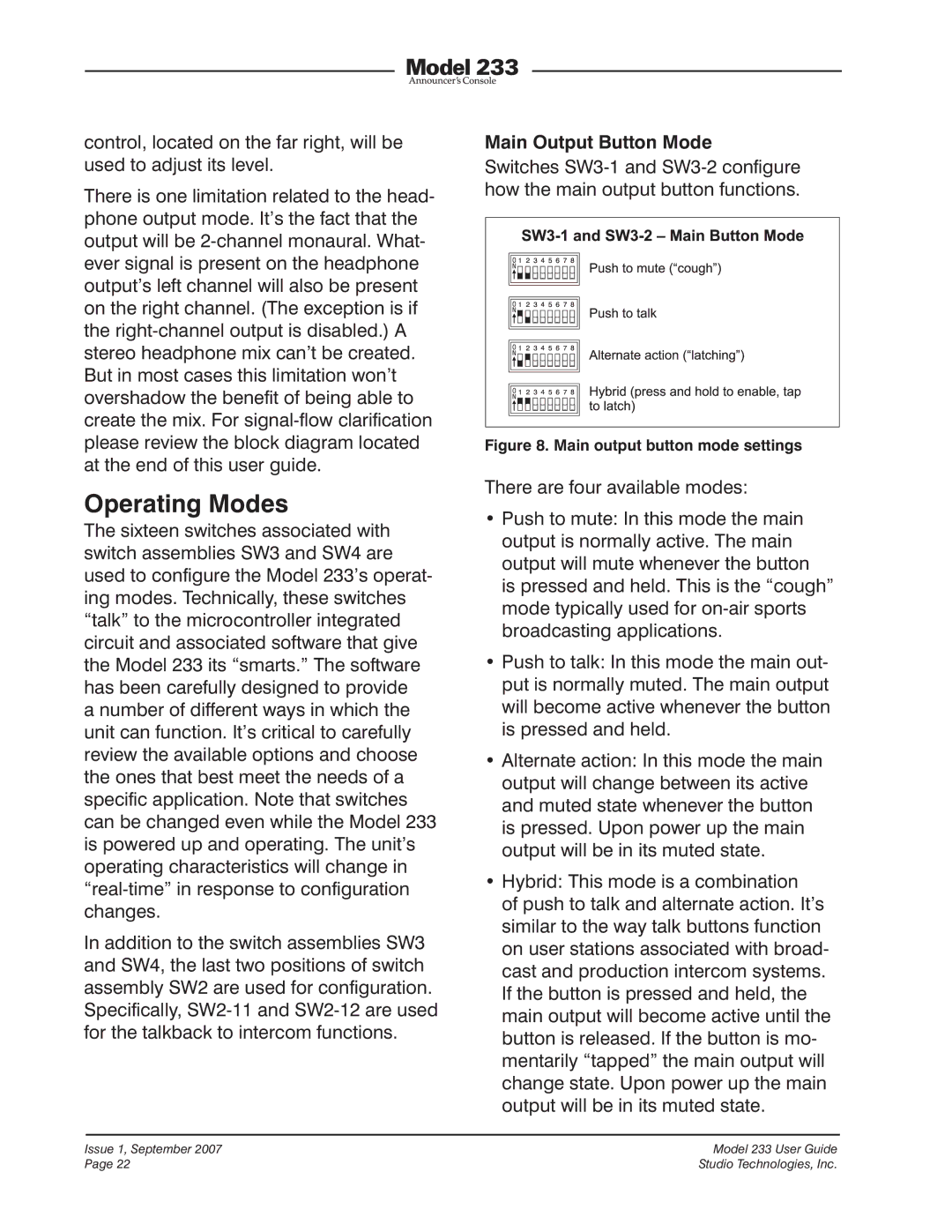
control, located on the far right, will be used to adjust its level.
There is one limitation related to the head- phone output mode. It’s the fact that the output will be
Operating Modes
The sixteen switches associated with switch assemblies SW3 and SW4 are used to configure the Model 233’s operat- ing modes. Technically, these switches “talk” to the microcontroller integrated circuit and associated software that give the Model 233 its “smarts.” The software has been carefully designed to provide a number of different ways in which the unit can function. It’s critical to carefully review the available options and choose the ones that best meet the needs of a specific application. Note that switches can be changed even while the Model 233 is powered up and operating. The unit’s operating characteristics will change in
In addition to the switch assemblies SW3 and SW4, the last two positions of switch assembly SW2 are used for configuration. Specifically,
Main Output Button Mode
Switches
Figure 8. Main output button mode settings
There are four available modes:
•Push to mute: In this mode the main output is normally active. The main output will mute whenever the button is pressed and held. This is the “cough” mode typically used for
•Push to talk: In this mode the main out- put is normally muted. The main output will become active whenever the button is pressed and held.
•Alternate action: In this mode the main output will change between its active and muted state whenever the button is pressed. Upon power up the main output will be in its muted state.
•Hybrid: This mode is a combination of push to talk and alternate action. It’s similar to the way talk buttons function on user stations associated with broad- cast and production intercom systems. If the button is pressed and held, the main output will become active until the button is released. If the button is mo- mentarily “tapped” the main output will change state. Upon power up the main output will be in its muted state.
Issue 1, September 2007 | Model 233 User Guide |
Page 22 | Studio Technologies, Inc. |
